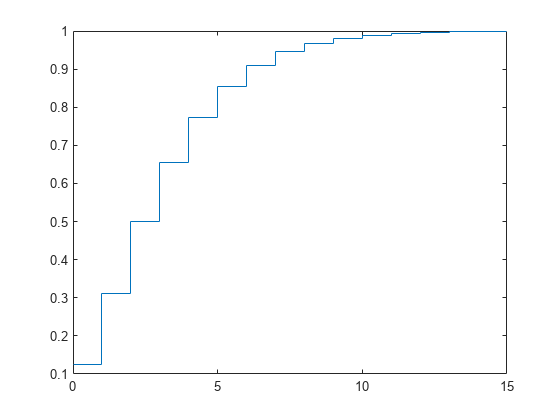nbincdf
Negative binomial cumulative distribution function
Syntax
y = nbincdf(x,R,p)
y = nbincdf(x,R,p,'upper')
Description
y = nbincdf(x,R,p) computes
the negative binomial cdf at each of the values in x using
the corresponding number of successes, R and probability
of success in a single trial, p. x, R,
and p can be vectors, matrices, or multidimensional
arrays that all have the same size, which is also the size of y.
A scalar input for x, R, or p is
expanded to a constant array with the same dimensions as the other
inputs.
y = nbincdf(x,R,p,'upper') returns the
complement of the negative binomial cdf at each value in x,
using an algorithm that more accurately computes the extreme upper
tail probabilities.
The negative binomial cdf is
The simplest motivation for the negative binomial is the case
of successive random trials, each having a constant probability p of
success. The number of extra trials you must
perform in order to observe a given number R of
successes has a negative binomial distribution. However, consistent
with a more general interpretation of the negative binomial, nbincdf allows R to
be any positive value, including nonintegers. When R is
noninteger, the binomial coefficient in the definition of the cdf
is replaced by the equivalent expression
Examples
Extended Capabilities
Version History
Introduced before R2006a
